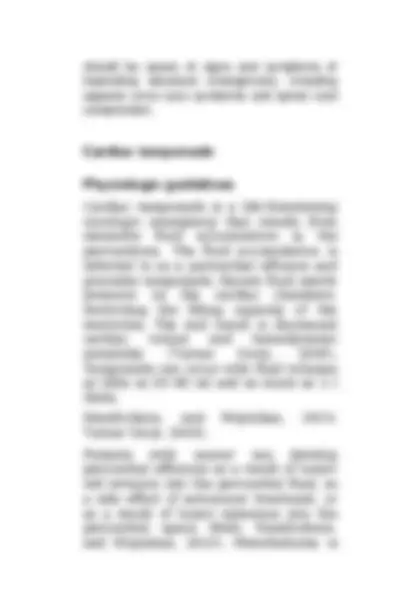








Study with the several resources on Docsity

Earn points by helping other students or get them with a premium plan


Prepare for your exams
Study with the several resources on Docsity

Earn points to download
Earn points by helping other students or get them with a premium plan
Community
Ask the community for help and clear up your study doubts
Discover the best universities in your country according to Docsity users
Free resources
Download our free guides on studying techniques, anxiety management strategies, and thesis advice from Docsity tutors
Acute Kidney Injury Critical Care
Typology: Summaries
1 / 10

This page cannot be seen from the preview
Don't miss anything!







In the event of AKI in the patient with impending or actual TLS, a nephrology consult should be placed. The goals are to minimize delays in anticancer therapy and optimize renal function. The tenets of AKI management include managing volume status, correcting electr abnormalities,avoidingnephrotoxins,and adjusting medications for renal function (Abu- Alfa and Younes, 2010). The development of AKI may exacerbate preexisting electrolyte abnormalities, particularly hyperkalemia and hyperuricemia (Benoit and Hoste, 2010). Hemodialysis or renal replacement therapy may be considered in patients with large tumor burden, elevated WBC count, chronic kidney disease, end-stage renal disease, or AKI at the time of presentation, or congestive heart failure. Other authors have suggested that renal replacement therapy be employed when hyperphosphatemia continues for more than 6 h after the initiation of vigorous hydration (Darmon, Roumier, and Azoulay, 2009). The use of hemodialysis in this
setting is not well studied and cannot be routinely recommended. Suggested criteria for hemodialysis include the following parameters unresponsive to other measures (Mughal et al ., 2010; Varon and Acosta, 2010): Potassium ≥ 6 mEq/l Uric acid ≥ 10 mg/dl Phosphorous ≥ 10 mg/dl Fluid volume overload unresponsive to diuretics Symptomatic hypocalcemia Severe acidosis Uremic symptoms such as mental status changes
In 2008, evidence-based guidelines for the prevention and treatment of TLS in adults and children were published (Coiffer et al ., 2008). The guidelines are the first to outline specific roles for both allopurinol and rasburicase (Mughal et al ., 2010). An algorithm based on TLS risk was developed. For low-risk patients, no interventions for prevention are recommended. For intermediate-risk patients, hydration and allopurinol are recommended as initial therapy to prevent hyperuricemia. Allopurinol should start 12 h prior to anticancer
should be aware of signs and symptoms of impending structural emergencies, including superior vena cava syndrome and spinal cord compression.
Cardiac tamponade is a life-threatening oncologic emergency that results from excessive fluid accumulation in the pericardium. The fluid accumulation is referred to as a pericardial effusion and precedes tamponade. Excess fluid exerts pressure on the cardiac chambers, restricting the filling capacity of the ventricles. The end result is decreased cardiac output and hemodynamic instability (Turner Story, 2006). Tamponade can occur with fluid volumes as little as 50–80 ml and as much as 2 l (Behl, Hendrickson, and Moynihan, 2010; Turner Story, 2006). Patients with cancer can develop pericardial effusions as a result of tumor cell invasion into the pericardial fluid, as a side effect of anticancer treatment, or as a result of tumor extension into the pericardial space (Behl, Hendrickson, and Moynihan, 2010). Mesothelioma is
the most common primary tumor type that involves the pericardium and is a difficult disease to treat. Other primary tumors of the heart include malignant fibrous histiocytoma, rhambdomyosarcoma, and angiosarcoma (Turner Story, 2006). Most effusions develop from lung or breast cancer; other causes include melanoma, leukemia, or lymphoma (Higdon and Higdon, 2006). Tumor obstruction of mediastinal lymph nodes can interfere with lymph drainage from the pericardium, leading to fluid accumulation. This is the most common cause of pericardial effusion in malignancy. Malignant effusions progress to tamponade more often than nonmalignant effusions because the presence of tumor cells stimulates the pericardium to produce excessive fluid (Turner Story, 2006). Tumors may also cause bleeding in the pericardial space, allowing rapid accumulation of fluid and increasing the risk for tamponade (Flounders, 2003). Many patients have metastatic disease in other sites at the time of presentation with pericardial effusion; the